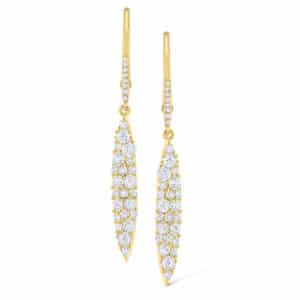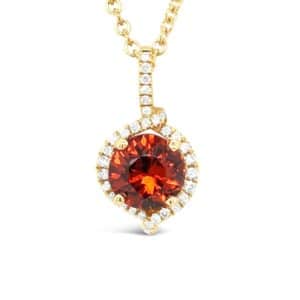Description
The elongated pear shape of this Ethiopian Opal instantly drew me in when I spotted it at the Tucson Gem Show. It is absolutely mesmerizing with great flashes of gold, oranges, blues and hints of yellow and greens. I paired it with a 4mm round Mexican Opal at the top of the pendant to play off the fiery orange flashes. I nestled all into a beautiful, warm 18k yellow gold bezel setting that provides added security to the both opals. The complete pendant measures an impactful 1 1/2″ in length.
A few facts about Ethiopian and Mexican Fire Opals-
- All Opals are made from the same molecular structure – Silica. Silica is basically glass made from nature with a unique formation of molecules to create color.
- Opal was discovered in Ethiopia and entered in the gem and jewelry market in 1994, but it was not until the 2008 discovery of opals in the Wollo Province that they became more commercially available.
- Ethiopian opal grows in large volcanic deposits high up in the hills, unlike Australian opals which are mined from deep beneath the ground.
- Ethiopian opal is hydrophane, which means it is porous enough to readily absorb water, much like a sponge. Which is why we recommend removing your opals before bathing, swimming or any other activity that might involve water.
- Fire Opals, also known as Mexican Opal, are formed in the depths of volcanos, after water meets silica-rich lava. Most of these gems are found in Mexico, but small quantities have been found in Oregon and British Columbia.
- The Mayan and Aztec people called it “quetzalitzlipyollitli,” (try to pronounce that a few times!) Or, for an easier translation, “the stone of the bird of paradise.”










